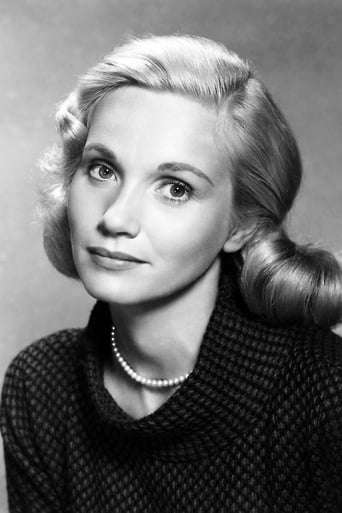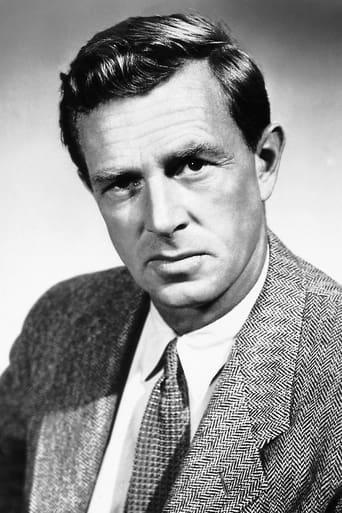WasAnnon
Slow pace in the most part of the movie.
Dynamixor
The performances transcend the film's tropes, grounding it in characters that feel more complete than this subgenre often produces.
SeeQuant
Blending excellent reporting and strong storytelling, this is a disturbing film truly stranger than fiction
Anoushka Slater
While it doesn't offer any answers, it both thrills and makes you think.
tomsview
I have always loved "Loving. That's partly because during the 1970's I was an aspiring commercial artist in Sydney, Australia. My heroes were the great illustrators, mainly American: Norman Rockwell, Tom Lovell, Robert McGuiness, Bob Peak, Mitchell Hooks, dozens of them. I kept scrapbooks of their work - it wasn't safe to leave a magazine near me in those days. "Loving" gave an insight into their world - sort of.Brooks Wilson is a struggling illustrator in New York who is about to land a big account (the type that would have gone into my scrapbooks). However Brooks isn't happy. He is married to Selma (Eve Marie Saint) who loves him, and has two precocious daughters, but he is having an affair on the side. Brooks is bitter about many things and lets everyone down - it's hard to feel sorry for him.Like many illustrators, Brooks feels his work is just to pay the bills and isn't that worthwhile. In a telling scene, Brook's crosses a busy street in New York to look at some enigmatic paintings hanging in the window of an art gallery - real art.The film is based on a novel by J. M. Ryan, the pen name of John McDermott. McDermott was an accomplished illustrator especially of action scenes. He also hated the changes the filmmakers made to the story.McDermott's illustrations were used as props in the movie and can be seen in the agent's office, and when the assistant visits Brooks at home. All the detail of Brooks' art life is authentic, especially his working methods. In one fascinating sequence, Selma puts down her knitting to pose as a Southern belle for reference for sketches Brooks needs to have ready in the morning.George Segal's persona as a nice guy who somewhere along the way got cynical is in full flower here. The film was made at a time when faith in institutions was under pressure. "Loving" captures a disillusioned, hedonistic vibe with middle-aged guys running around with their new cookies.Keenan Wynn plays Brook's harassed agent, while Sterling Hayden as the demanding client, Lepridon, almost seems to be channelling Captain Ahab, and Roy Scheider has a small role as an ad rep. "Loving" is a bit close to the bone to be a comedy, but it's better than its obscurity would indicate. And if you feel nostalgic for those magnificent, hand-drawn illustrations of yesteryear, then it's a film to appreciate on a number of levels.
lorelei3
I just finished watch this movie and it was one of the worst 1.5 hrs. I've spent in my life.Let me work backwards on this; when the final credits ran I was so confused by the abrupt ending that I had to rewind just to make sure that the movie didn't cut off the ending. It made no sense whatsoever. Immediately after the fight scene, the redhead just walks away. You'd think she would have said something and wouldn't it have been better if Brooks had seen her standing there?There is no relationship between the viewing audience and the actors, you end up not caring at all about the characters. Oh and don't let me forget the biggest mystery of them all, and this really kills me. The part where the guy goes into the room with the drunk girl -- you know he's going to take advantage of her but there are no repercussions and no one ever knows! Why did they put this in there if the hidden TV cam didn't even catch him?!?!?I beg of you all, don't watch this. The only reason I rated it a 4 rather than a 1 is because of the groovy 70's music and fashion.
chaosHD
In the wake of Bob & Ted & Carol & Alice came a string of similar sex comedy/dramas including Loving. George Segal was on a role in the late 60's/early 70's, but this is one of his lesser known efforts from the period. And seeing how few votes this movie has gotten here on IMDb, it's still quite unknown despite being available on DVD since 2003.The film has a typical plot of it's time: successful man throwing away his perfect life with wife and kids with his unfaithfulness. Eva Marie Saint who plays his wife is far more attractive than the woman he's seeing on the side, so it was hard for me to feel any sympathy at all for this guy. A young Sherry Lansing (the future Paramount producer) shows up in a small but memorable role, looking like the twin sister of Raquel Welch. She should of played the "other woman" instead, we would of understood why he was cheating on his wife a whole lot more. Not only did Lansing's career end not long after Loving, but the actress who played the other woman, Janice Young, vanished completely after Loving, as did the other major actress in the movie, Nancie Phillips. Neither of their IMDb listings list them as being deceased, so i'm definitely curious as to their whereabouts.One major reason why this movie deserves more attention is that it now possesses more historical importance than ever before. As noted in the trivia section, there's a scene that takes place at a construction site, and that scene was shot on location at none other than the World Trade Center construction site, of all places.
Daniel Humphrey (saltsan)
In the great Jean Renoir classic "Rules of the Game", a character played by the director himself comments that "everybody has his own good reasons." This rightly has been taken to be the great humanist director's basic philosophy of life. Seeing, over and over again, this understanding, non-judgmental attitude by a narrative artist toward his characters' weaknesses is what makes art film audiences love Renoir's work and consider him one of the greatest filmmakers of the 20th century. Irvin Kershner's "Loving" is one of the rare Hollywood films worthy of being called Renoirian, and it is for just this reason. Even though "Loving" is filled with highly-flawed characters making seemingly disastrous choices about their lives, its genius is how it puts the audience in a position where it cannot (or at least cannot with any decency) judge them. This may be more than many audience members can handle, being so used to films with heroes and villains about whom they are allowed to feel smugly superior. The legendary "New Yorker" critic Pauline Kael, in her rave review of the film, wrote that it "looks at the failures of middle-class life without despising the people; it understands that they already despise themselves" and that there's "a decency in the way that Kershner is fair to everyone." We could use a few more films like "Loving" out there in the American film cannon. If you every get a chance to see this film, don't hesitate to do so!




